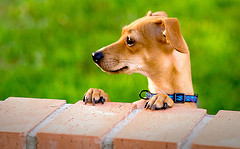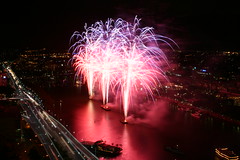Self-portrait shooters usually rely on the trial-and-error method of focusing. Shoot, shoot, and shoot again until the perfect combination of pose, exposure, and focus are achieved. But there is a better way (several, in fact)! All of these methods are quick and easy and will give you accurate focusing without a lot of frustrating trial and error.
Before you begin, you’ll just need to acquaint yourself with how to put your camera into manual focus mode. You won’t actually use manual focus for focusing—you’ll just use it to keep the focus once you’ve got it set just the way you want. For each of the methods below (except the last one), you’ll auto-focus first and then set the camera to manual focus so that it won’t attempt to re-focus when you take the shot. You’ll also find that having a remote shutter release helps immensely.
… Continue reading I’m ready for my closeup: 6 methods for perfectly focused self-portraits



 2. Try to capture a characteristic action or activity. If you’re shooting your pet, you know its personality. Try to take a picture that reflects some characteristic, such as curiosity, goofiness, adoration, or self-possession. You do not have to include every inch of your pet, only the parts needed to express what you’re trying to capture. This image by
2. Try to capture a characteristic action or activity. If you’re shooting your pet, you know its personality. Try to take a picture that reflects some characteristic, such as curiosity, goofiness, adoration, or self-possession. You do not have to include every inch of your pet, only the parts needed to express what you’re trying to capture. This image by 












